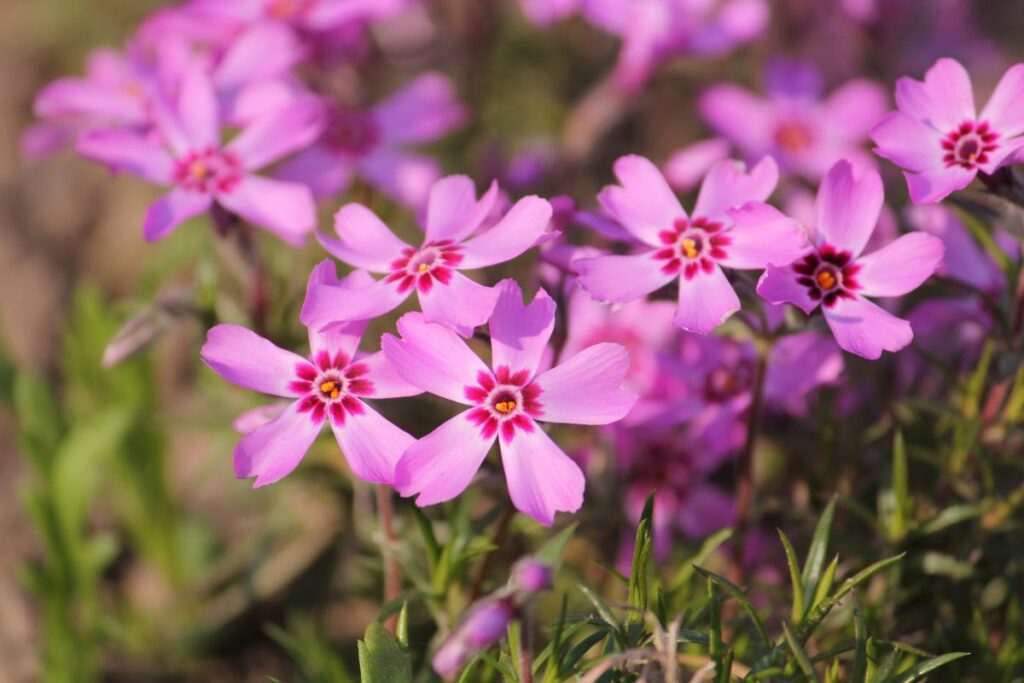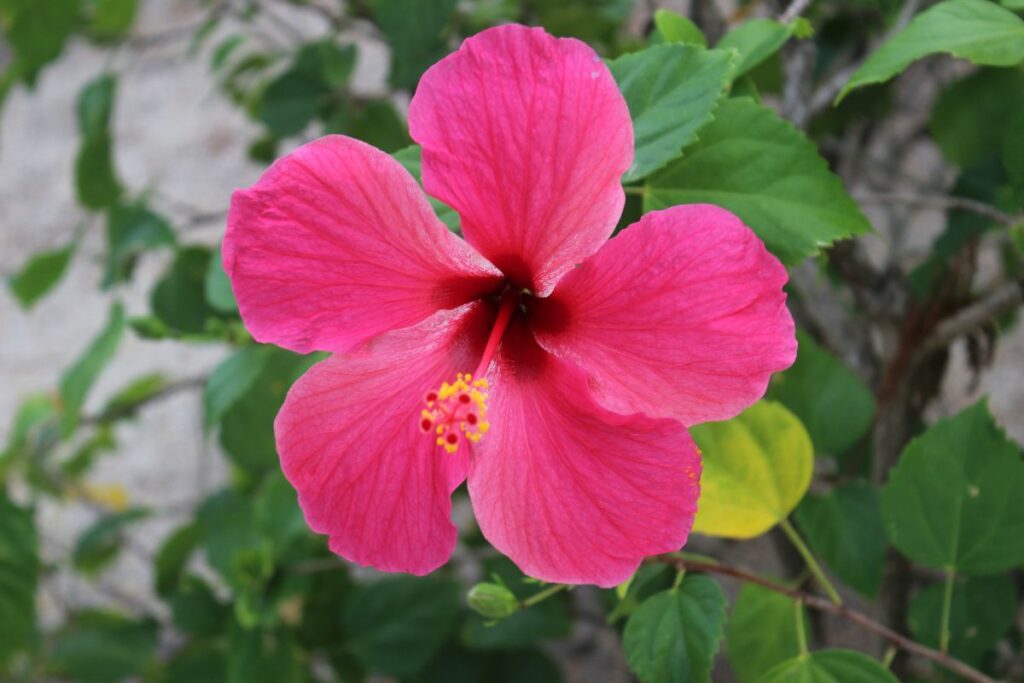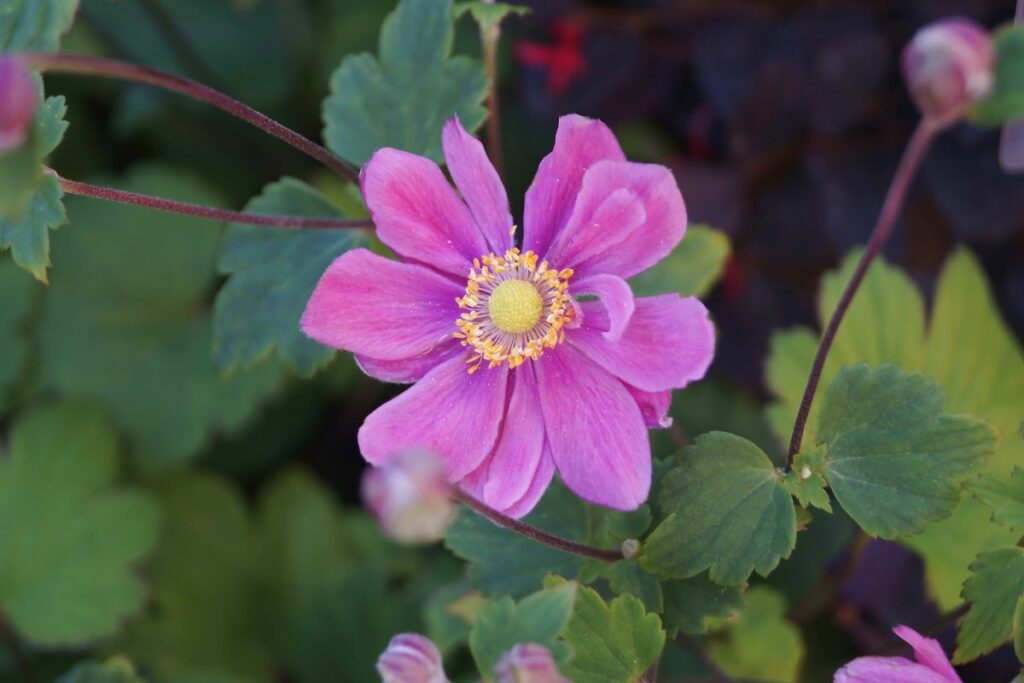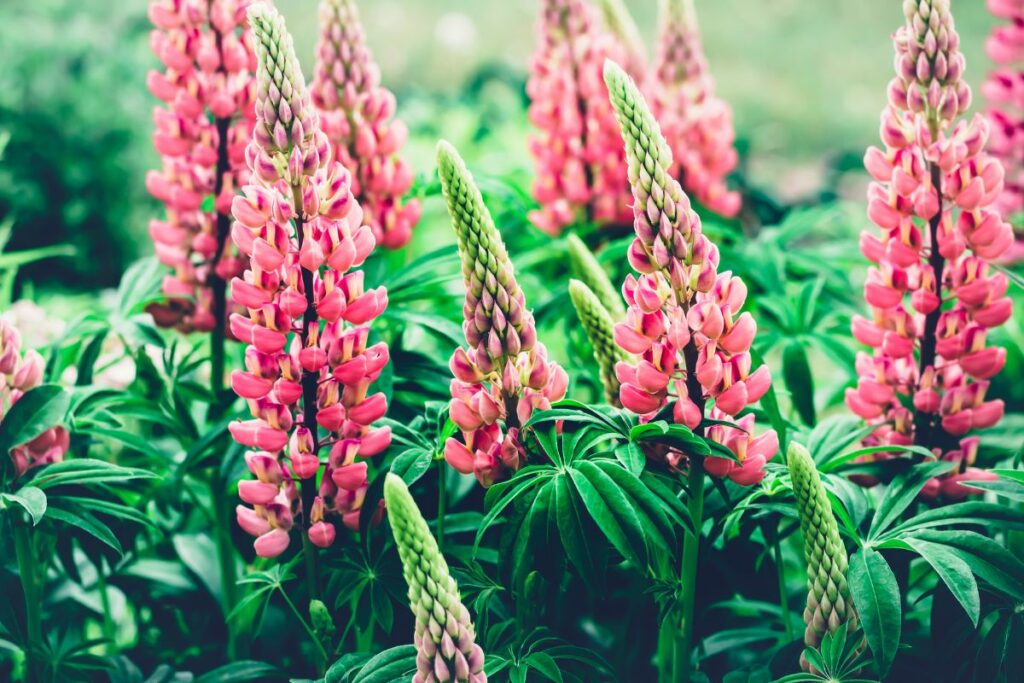Introducing pink perennial flowers to your garden can create an atmosphere of serenity and romance. These vibrant blooms not only add a touch of color but also offer the convenience of reappearing year after year with minimal maintenance required from you.
With a myriad of exquisite pink perennials available, selecting the perfect one for your garden can be daunting. This guide provides you with a curated selection of ideas to enhance both your front and backyard with these charming flowers.
Essential Pink Perennials for Your Garden
Incorporating pink perennial plants in your garden ensures a spectrum of hues that embody charm, tenderness, and joy. With varieties that range from subtle pastels to vibrant magenta, your outdoor space can maintain a dynamic color display from one year to the next.
- Versatility: Integrate pink perennials in various garden styles, be it a shaded woodland retreat or a quaint English cottage setting.
- Benefits: Perennials offer a sustainable choice, returning seasonally, cutting down on the effort of replanting each year unlike their annual counterparts.
Choose perennials and enjoy the lasting vibrancy and reduced maintenance in your floral haven.
Vibrant Perennial Pinks for Garden Spaces
- Rosa: A timeless bloom for any garden display.
- Gerbera: Diverse and vivid, perfect for garden vibrancy.
- Lilium: Elegant flowers for a touch of class.
- Myosotis: Small but impactful, ideal for garden nooks.
- Tulipa: Classic choice for a splash of spring color.
1. Achimenes
- Blooming Period: From late spring to fall
- Color: Rich deep pink to purple flowers
- Location: Thrives in USDA zones 10-11
- Lighting: Prefers dappled sunlight
- Soil Type: Loamy, well-draining soil
- Versatility: Suitable for indoor, outdoor, and ground cover planting
- Wildlife Attraction: Bees and beneficial insects are drawn to it
2. Amarcrinum
- Zones: Thrives perennially in USDA zones 8-10
- Appearance: A cultivar with the robustness of amaryllis and the aesthetic appeal of both parent plants
- Garden Benefits: Provides height and complements lily-themed spaces
- Care: Prefers rich, well-aerated soil that drains well
- Sunlight: Needs either full sun or partial shade
Ensure ample sunshine or semi-shade for optimal growth.
3. Aster

- Blossoming Period: Enjoy a splash of color in your garden with pink asters blooming from late summer through the early fall.
- Sunlight Requirements: For optimal growth, ensure these flowers are planted in a location that receives full sun.
- Wildlife Attraction: Your pink asters will become a popular spot for bees and butterflies.
- Cultivar Choice: Consider the ‘Wood’s Pink’ variety for its appealing clump formation and suitability for container or ground planting.
- Adaptability: This plant thrives in USDA hardiness zones 4-8.
4. Bergenia
- Versatility: Thrives in varying light conditions, from full sunlight to full shade.
- Hardiness Zones: Suitable for USDA zones 3-8, adaptable to different climates.
- Growth: Offers excellent ground coverage, naturally suppressing unwanted weeds.
- Height: Attains sufficient height to add visual impact within a garden space.
- Flowers: Boasts attractive pink blooms on red stems, enhancing its decorative appeal.
5. Bleeding Heart
- Hardiness Zones: Thrives in zones 3-9.
- Blooming Period: End of spring to early summer, bringing a vibrant pink hue.
- Size & Texture: Adds substantial volume and varied texture to your landscape.
- Cut Flowers: Impressively last up to two weeks.
- Wildlife Appeal: Welcomes bees, hummingbirds, and butterflies.
Caring for this plant involves:
- Light Requirements: Morning sunlight with afternoon shade.
- Soil Requirements: Must have good drainage.
6. Campion

- Habitat Zones: Thrives in zones 5-8.
- Lifespan: While not long-lived, it propagates through self-seeding.
- Floral Display: Showcases vibrant pink and white blooms.
Growth Preferences:
- Sunlight: Flourish with ample sun exposure.
- Soil: Prefers well-drained soil.
Ideal for:
- Garden Variety: Versatile for rockeries, borders, and traditional English gardens.
Flowering Phase:
- Season: Peaks in late spring to summer.
- Care Tip: Regular sunshine enhances the flowering profusion.
7. Chrysanthemum
For a vibrant display of color from September to November, consider planting the full spectrum of chrysanthemums including early, mid-season, and late bloomers. These blossoms come in a delightful array of pink tints, perfect for brightening your autumn garden.
Chrysanthemums are favored for their resilience and ease of cultivation, making them a hit with gardeners. Here’s why they might become your favorite too:
- Robust: They thrive with minimal fuss.
- Attractive to Pollinators: Bees and butterflies frequently visit them.
- Versatile: Ideal for a variety of garden uses from ornamental borders to potted displays.
Additionally, these flowers are touted as deterrents for lizards, adding practicality to their aesthetic appeal.
To ensure healthy growth, position your chrysanthemums in zones 5-9, ensuring they receive ample sunlight with slight shade during peak sun hours. Keep the soil consistently moist and well-drained for best results.
8. Coral Bells
- Bloom Duration: Lasts over 4 weeks in spring and summer
- Flower Color: Bright pink blossoms
- Sun Exposure: Prefers morning sun, light shade in the afternoon
- Water Needs: Low – moderate watering suffices
- Hardiness Zones: Thrives in zones 4-9
- Garden Uses: Ideal for planters, also suits cut flower arrangements
- Wildlife Attraction: Attracts butterflies and hummingbirds
9. Creeping Phlox

Creeping phlox stands out for its ability to suppress weeds before they become a problem. Its charming pink blooms create a plush carpet ideal for strolling upon and enticing various pollinators.
Peak flowering occurs from the middle of spring to its latter part, enhancing perennial borders, alpine landscapes, or container gardens within hardiness zones 5 through 9.
To flourish, this plant desires a sunny spot (partial shade can be tolerated in intense afternoon heat) and a soil rich in nutrients with efficient drainage.
10. Dahlias
Dahlias captivate with their lush hues ranging from the gentlest pinks to the most vibrant depths. They commence their display in the heart of summer and continue their visual spectacle until the chill of fall.
Their allure lies in the diversity of blossoms they offer, from the simple elegance of single blooms to the intricate layers of double, cactus, and pompon varieties.
For your garden, dahlias serve multiple purposes. They create eye-catching centerpieces, define the edges of your flower beds, or can be grouped in large numbers for a dramatic effect.
As perennials in zones 8-10, these flowers flourish with ample morning light but need protection from harsh conditions. They prefer nutrient-rich, well-drained, and consistently moist soil to reach their full potential.
11. Delphinium
Growth Characteristics:
- Thrives in full sun
- Double bloom cycle: early summer and late season
- Best in USDA zones 3-7
Care Requirements:
- Prefers moist soil
- Needs structural support for optimal height
Gardening Benefits:
- Adds vertical dimension to gardens
- Attracts pollinators with bright hues
12. Dianthus

- Resistant to deer
- Color varieties: pure pink, magenta, white with pink streaks
- Ideal locations: full sun, light shade in hot areas
- Soil requirement: rich in humus, well-drained
- USDA hardiness zones: 3-9
- Lifespan: temporarily perennial, with renewal from seed
- Uses in garden:
- Pollinator attractant
- Ground covering
- Filling spaces among stones
Dianthus offers a splash of color, especially resilient to deer browsing. Although longevity may fall short, allowing blossoms to go to seed ensures a fresh emergence the subsequent season. Place it in areas with ample sunlight, or gentle shade in high temperatures, and in fertile, well-drained soil for optimal growth.
13. Forget-Me-Nots
- Color Variations: Offerings range from traditional light blue to standout deep pink.
- Soil Preferences: Prosper in fertile, well-draining soil.
- Growth Zones: Perennial presence in zones 3-8.
- Lighting Needs: Flourish in full daylight or partial shade.
- Garden Impact: Unfold into vibrant ground coverage; a woodland aesthetic enhancer.
14. Foxglove
- Ideal for: Woodland & Wildflower Gardens
- Color: Vibrant Pinks
- Structure: Tall Spikes with Drooping Blooms
- Attraction: Diverse Pollinators
Season:
- Primary: Early Summer
- Secondary: Possible Late Season Flush
Hardiness Zones: 4-9
Growth:
- Light: Tolerates Shady Areas
- Self-Propagation: Yes, through self-seeding
Safety Note:
- Caution: Harmful if ingested. Monitor around children and animals.
15. Hibiscus

When selecting hibiscus plants, understand the importance of matching the variety to your climate. Various hibiscus types flourish either in tropical or temperate regions.
Choose a color that appeals to you. For instance:
- Tropical Selection: Opt for a vivid magenta such as the ‘Vibrant Canvas’ variant.
- Temperate Selection: Select the ‘Morning Blush Spiral’ for a delicate pink hue in cooler climates.
Both choices will be a magnet for pollinators, with brighter hues particularly charming to hummingbirds.
Hibiscus plants thrive with plenty of water — some may require multiple waterings throughout the day. For optimal flowering:
- Sunlight: Position in an area receiving full sun.
- Soil: Plant in soil that offers good drainage.
Proper care results in a lush display of hibiscus blooms that enhance your garden’s appeal.
16. Hydrangea
- Zones: Thrive in 3-7
- Lighting: Partial shade preferred, especially during peak sun hours
- Soil: Acidity impacts flower color; proper fertilization is key
- Benefits: Fragrant varieties entice pollinators
17. Impatiens
- Appearance: Cascading clusters of vibrant pink blooms adorn these plants, making them perfect for elevated displays like hanging baskets.
- Wildlife Attraction: Their nectar-rich flowers are a magnet for hummingbirds and butterflies.
- Frost Sensitivity: They’re sensitive to cold. Protect them by planting in pots to easily shift indoors during cooler temperatures.
- Floral Display: They provide a continuous display of color right up until the arrival of the first frost. In regions without frost, expect year-round flowering.
18. Japanese Anemone

- Zones: Suitable for zones 4-8
- Color: Offers a serene light pink hue
- Bloom Period: Flowers from mid-summer to fall
- Foliage: Lush, deep green leaves
To enjoy the tranquil blooms of the Japanese anemone, ensure you plant it in a location with partial shade to avoid legginess. This plant thrives in a rich, moist, and well-drained soil. Its prolonged flowering span and vibrant foliage make it an excellent choice for your garden. Additionally, it’s a magnet for various pollinators and is relatively low-maintenance, making it a perfect addition for a garden that buzzes with life.
19. Knock-Out Roses
- Sun Requirements: Thrive in ample sunlight
- Bloom Cycle: Continuous from Spring to Fall
- Hardiness Zones: Ideal in zones 5-9
- Color Variants: Primarily shades of pink
- Placement in Landscape: Standalone showpiece or in group plantings
To enhance your garden’s aesthetic, consider the addition of knock-out roses. Plant them in well-lit areas to enjoy a prolific flowering season. Integrate these roses into your perennial gardens or containers for an impressive display. They are robust, ensuring a lush garden from springtime to the autumnal months.
20. Lily Of The Valley
- Habitat: Thrives in partial to full shade, requires well-drained, consistently moist soil.
- Hardiness: Perennial in USDA zones 2-9.
- Blooming: Begins in May with white, bell-like flowers.
- Scent: Known for its delicate and alluring aroma.
- Growth: Forms dense clusters and serves as an effective ground cover.
- Maintenance: Minimal; natural spreading negates the need for frequent replanting.
21. Lupine

- Hardiness: Suitable for zones 3-9.
- Light: Thrives in full sunlight, manageable in partial shade.
- Soil: Prefers well-drained ground.
Lupines enrich your beginner garden with resilient characteristics and minimal care requirements. They bring vertical elegance and a suite of colors, where pinks can be complemented by white and peach tones for visual harmony. Expect these blooms to invite a variety of pollinators, enhancing the ecosystem of your outdoor space.
22. Oriental Lilies
- Hardiness: Thrives in USDA zones 3-9
- Uses: Excellent for cut flower arrangements
- Color Variety: Includes hues of pink
- Bloom Season: Flowers in spring
- Care Tips:
- Soil: Requires fertile, well-draining soil
- Light: Needs abundant direct sunlight
23. Peonies
Peony plants are cherished for their lush blooms and the enchanting aroma that accompanies them, making them a coveted addition to any garden dedicated to pinks.
- Bloom Period: These flowers come alive with color from April through June.
- Sunlight Needs: Optimal growth is achieved with full sun exposure during the morning and partial shade in the afternoon to mitigate intense heat.
- Cultivation Zones: Ideally grown in USDA hardiness zones 3 through 8.
- Attractiveness to Wildlife: They act as natural attractants for bees, who are drawn to their vibrant petals and scent.
- Flower Volume: Providing the correct conditions will yield a rich bounty of blossoms.
Gaining insight into the various stages of peony development aids in nurturing these plants more effectively through each part of their growth cycle.
24. Snapdragon

Blooming Season: Continuous flowering from June to October.
Variety Highlights: ‘Pretty in Pink’—a perennial with vibrant pink blossoms thriving in full to partial sunlight.
Gardening Benefits: Attracts advantageous insects. Ideal for rock gardens with low maintenance needs.
Hardiness Zones: Best suited for zones 7-11. As a perennial, it reliably returns each year.
Optimal Placement: Plant as a border or a standout feature for yearly enjoyment.
25. Tulips
Tulips emerge as vibrant beacons in springtime, painting your garden with a variety of hues. Interpret the message of these blooms through the color chart:
- Pink Tulips: Convey warmth, love, and best wishes.
Planting a selection from soft pinks to deep fuchsia can transform your outdoor space. These early bloomers bring life to your garden, drawing in pollinating insects, require minimal upkeep, and offer numerous landscaping possibilities.
Tulips thrive as long-lived plants in USDA hardiness zones 4 through 10, especially when bathed in sunlight and rooted in well-draining soil.
May this information spark your interest in designing a garden featuring a pink haven or a mix of tulips with other flora.

